Ortofon MC X Series Cartridges
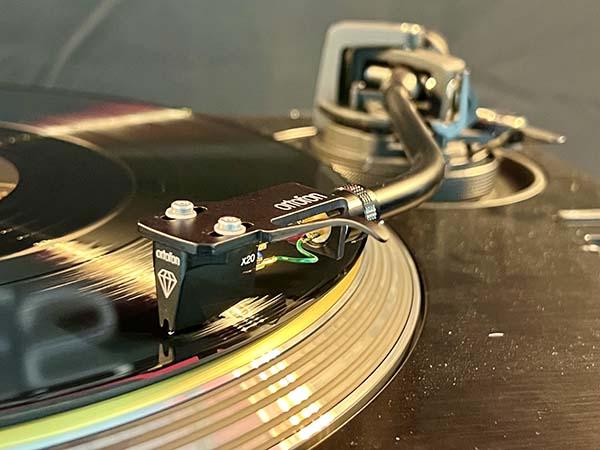
Ortofon introduced a new lineup of four moving-coil cartridges as part of their MC X Series at High End Munich 2025 — the aptly named foursome consisting of the MC X10 (€299), MC X20 (€499), MC X30 (€699), and MC X40 (€999). Presentations and brief demos were given at intervals in Room F131. There, I caught a good portion of Peter Hjordt’s presentation, during which he would occasionally pause to play part of a track or two. (More on that in a bit.)
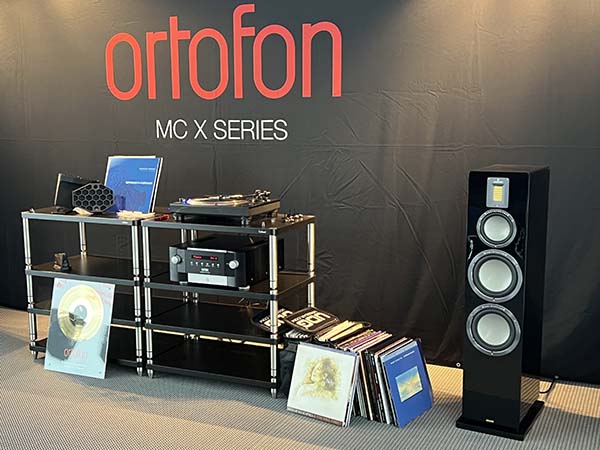
The room’s setup included a Technics SL-1210G turntable connected to a Mark Levinson 585.5 integrated amp (with built-in phono preamp) that powered a pair of Audiovector QR 7 XE loudspeakers connected to a pair of subwoofers that were handling only 30Hz and below. The new MC X lineup was also on static display in cases alongside other Ortofon cartridge lines and products.
The listening conditions in the room were certainly not ideal, but these short demos were more about underscoring some key points Hjordt was making. Initially using an older, earlier series Ortofon MC X10 (IIRC) cart, playback of Jennifer Warnes’ elegant version of the Leonard Cohen classic “Bird on a Wire” (from one of Impex’s more recent 180g versions of her 1986 Famous Blue Raincoat (The Songs of Leonard Cohen) LP) was rendered cleanly with crisp detail — akin to, say, to a lightly starched white blouse — and with pretty good attacks and loud-to-soft dynamics.
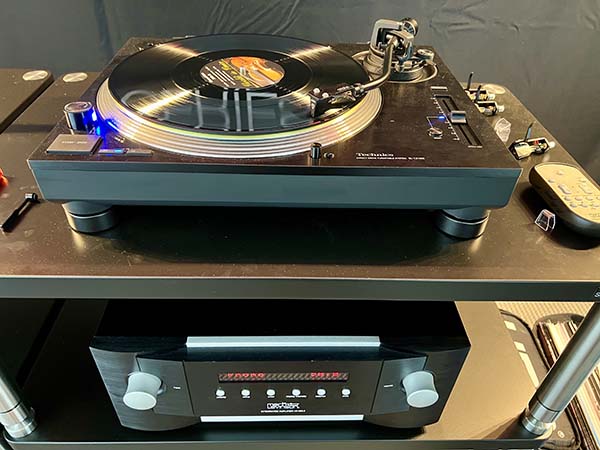
Next came a greater challenge, music from Vivaldi in Venice, a 2LP set on the Chasing the Dragon label as performed by Interpreti Veneziani, came through in crisp, clean detail — although some of the higher violin frequencies grew slightly peaky (and, well, verging on slightly ouchy for me). Maybe this was a model better suited for other music? A switch to the new MC X20 cart — a roughly €200 upgrade — and then repeating excerpts of the two Vivaldi tracks I heard showed improvements: smoother sound overall, with increased snap on attacks. Strings were sweet and smooth again.
Next, a change to the MC X40 yielded further improvements: marked increase in detail while retaining smoothness, plus increased refinement and impressions of more open soundstaging.
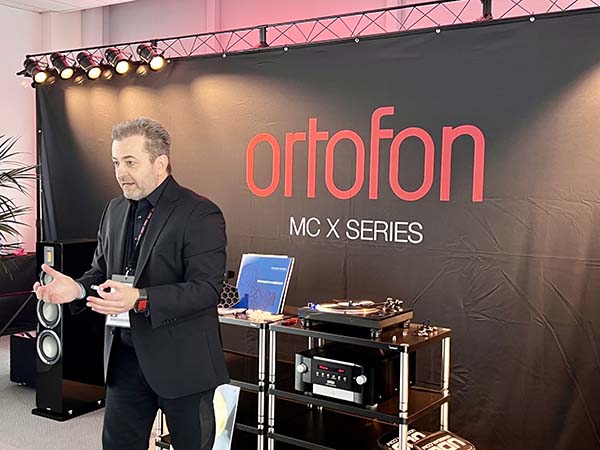
During this part of the session, Hjordt (seen above), after some moments of playback, turned up the volume. More details were revealed from within the grooves but didn’t grow harsh or seem to distort (or become irritating) at higher SPLs. On that Vivaldi LP, the strings retained their sweetness with added air and space. Could the boron cantilever make that much difference? What other factors could have been at play? We also listened to a cut from Ndiwe, a 2023 LP by Miriam Mandipira & The Soul Family, whose vocals soared and floated, seemingly suspended in the air.

The MC X Series carts share some commonalities, primarily their stainless-steel frame that gets MIM-molded into a proprietary honeycomb-form structure. (MIM is short for metal injection molding.) Ortofon reports benefits that include increased mechanical stability, and a Physical Vapor Deposition (PVD) is added for appearance and material integrity over time.
In addition, these carts all have the same output voltage (0.4mV), tracking force (2g), internal impedance (6ohms), and weight (8.6g), and all use high-purity silver wire in their coils and deploy quad coils. All have aluminum cantilevers except the top-of-the-line MC X40, which has a boron cantilever. The MC X cartridge coils all use Ortofon’s custom-developed rubber dampers to minimize vibration and help control coil movement to reduce distortion and assist with musical accuracy, according to the company.
Their main differences among these cartridges — pricing aside — involve types of stylus types/shapes and tip radii. The entry-level MC X10, for example, is equipped with an elliptical stylus, while the X20 has a nude elliptical, the X30 has a nude fine line, and the X40 comes with a nude Shibata type.

It’s not every day that one sees and hears about cartridges in this much detail. Samples of some very tiny parts (in small clear plastic bags), as well as some very oversized cartridge samples, were passed around in the room. Apparently, this was done to show the materials and scale, and to reveal the handiwork needed to assemble these handmade cartridges. In many ways, it’s comparable to precision watchmaking, something that was brought to mind after the samples came my way.
Other Ortofon carts in the company’s Concorde series were also on display in a case in the room, as shown below. Meanwhile, Part 8 will be coming soon!
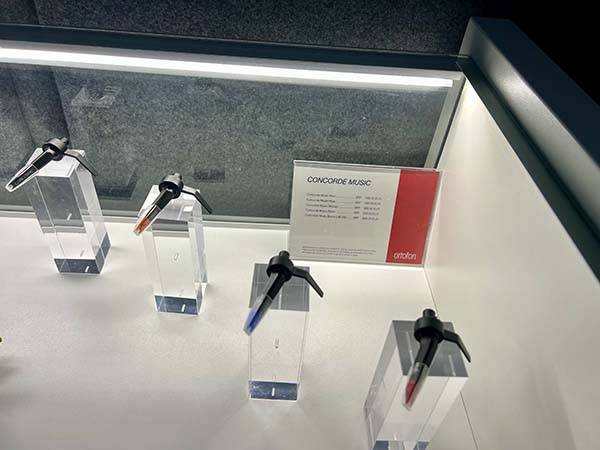
Author bio: Julie Mullins, a lifelong music lover and record collector since age 10 who takes after her audiophile father, is also a contributing editor and reviewer on our sister site, Stereophile, for whom she also writes the monthly Re-Tales column. A former fulltime staffer at Cincinnati’s long-running alt-weekly CityBeat, she programs and hosts a weekly radio show on WAIF called On the Pulse.
For Ken Micallef’s 11½-minute Munich 2025 video diary, which features a wide swath of new turntables, tonearms, and cartridges, go here.
For Part 1 of Julie Mullins’ Munich 2025 show report, go here.
For Part 2 of Julie Mullins’ Munich 2025 show report, go here.
For Part 3 of Julie Mullins’ Munich 2025 show report, go here.
For Part 4 of Julie Mullins’ Munich 2025 show report, go here.
For Part 5 of Julie Mullins’ Munich 2025 show report, go here
For Part 6 of Julie Mullins’ Munich 2025 show report, go here.
For even more High End Munich 2025 coverage, go here on our sister site Stereophile.







































